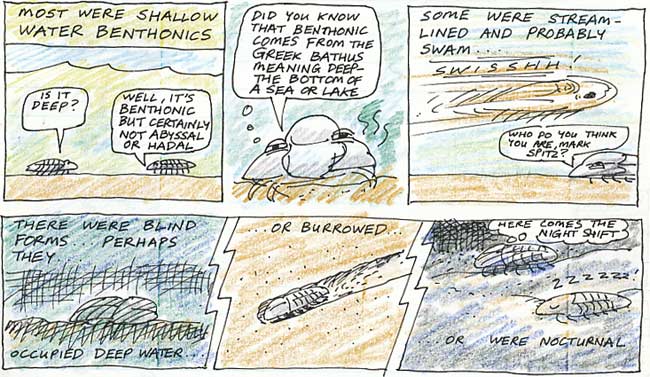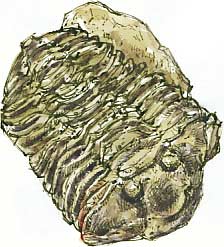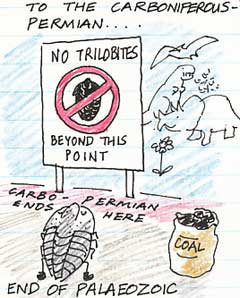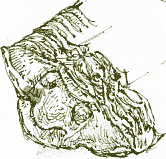
Comic strip from my 8 pages of notes on trilobites that I compiled for my geology A-level in 1991.
Wild West Yorkshire, Saturday 13 November 2010
previous | this month | next

Comic strip from my 8 pages of notes on trilobites that I compiled for my geology A-level in 1991.
 IT'S UNUSUAL for the structure of the eye of the trilobite to be examined in close-up detail in a prime time comedy slot but this evening in his review of the week's television output, TV Burp, Harry Hill claimed;
IT'S UNUSUAL for the structure of the eye of the trilobite to be examined in close-up detail in a prime time comedy slot but this evening in his review of the week's television output, TV Burp, Harry Hill claimed;
“I decided to try and make David Attenborough say the words 'sea anemone' even though his programme has nothing to do with sea anemones.”
In a clip from First Life, the wrap-around honeycomb of calcite lenses that made up the compound eye of a species of trilobite is shown in close-up while Attenborough explains: "With its 360 degrees of vision this trilobite could see an enemy approaching from any direction."
 The Rise and Fall of the Tribolites
The Rise and Fall of the TribolitesFirst Life has been fascinating. I hadn't realised just how successful the trilobites were. I've tended to think of them as the marine equivalent of the woodlouse; widespread and ubiquitous but very much in the background, however Attenborough showed that, once the trilobites had become the first group of animals to develop an exoskeleton, they were able to modify it to diversify into a wide range of life styles in a wide range of marine habitats. They were a dominant group for over 200 million years but started to go into decline after the Devonian mass extinctions 364 million years ago.
In First Life, Attenborough suggests that the 'Cambrian Explosion' in the diversity of lifeforms was triggered by the 'Snowball Earth' ice age towards the end of the Cambrian, but it seems that trilobites were already on their way out before the biggest mass extinction event of them all at the end of the Permian and beginning of the Triassic period, 251 million years ago. The loss of continental shelf benthonic habitat (see my cartoon strip above) as all the world's continents came together to form the supercontinet Pangaea may have been a factor in their decline.
Accompanied by Richard Fortey, an authority on trilobites, Attenborough toured the Atlas Mountains of Morocco, which are reknowned for their trilobite fossils. Some of the adaptions are inexplicable. One species of trilobite had a single antler-like appendage, in the shape of a trident, almost the length of its body, sticking out in front of it.
We don't know what it was for, said Attenborough; perhaps it was a receptor for a sense that we don't yet understand?
“Or perhaps it used it as a toasting fork?” Hill suggested.
My trilobite came from a gift shop in Wakefield but I suspect that it is from Morocco.
Seen from above, the trilobite's shell is divided into the three lengthwise lobes that give these creatures their name. There's no detail preserved on the underside of this particular fossil as it's likely to be a discarded outer skin, moulted as the trilobite grew, but if you turned a living trilobite over you'd see, at the front, a curved plate called the rostrum which supported what are thought to be the creature's mouthparts.
As I wrote in my A-level geology notes, 'rostrum' is . . .

 Richard
Bell, illustrator
Richard
Bell, illustrator
previous | this month | Wild West Yorkshire home page | next